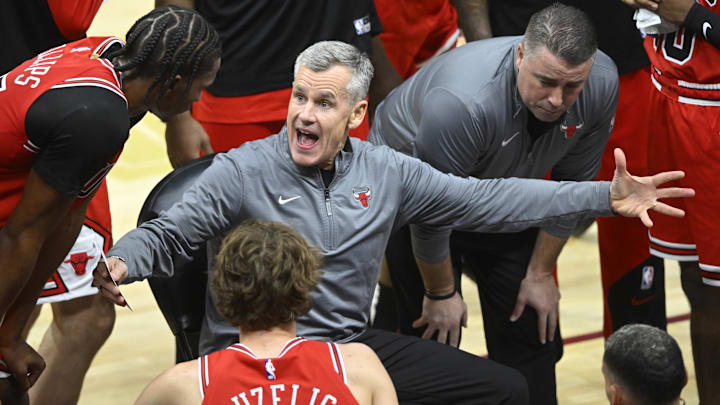The Chicago Bulls played at the second-fastest pace in the NBA last season, took the third-most threes, weren't terribly careless with the ball and averaged 117.8 points per game, good for sixth best. If they force turnovers at an even slightly higher clip, they could become one of the most dangerous offenses in the league.
Executive VP of basketball operations Arturas Karnisovas is building a roster with a very apparent blueprint: add as many young, athletic, long and versatile wings as possible, and then wreak havoc defensively and outrun teams in transition.
The Bulls drafted an explosive 6-foot-10 wing/forward in Matas Buzelis last summer and added 18-year-old Frenchman Noa Essengue, another 6-foot-10 hybrid forward with a 7-foot-1 wingspan, in the 2025 draft. They traded Lonzo Ball for Isaac Okoro, a sturdy 6-foot-5 wing known for his athleticism and defense. Patrick Williams fits the mold, even if he's been severely underwhelming as a starter.
Julian Phillips and Dalen Terry share the same physical traits, and even Ayo Dosunmu, though he's listed as a guard, is 6-foot-5 and an above-average defender. Yet, somehow, this group forced fewer giveaways than the Charlotte Hornets and Washington Wizards.
Imagine if that number jumped by just a couple?
The Bulls are a step away from one of the NBA's most explosive offenses
Chicago forced 12.6 turnovers per game last season, more than only the Phoenix Suns (12.2) and Utah Jazz (11.8). Despite the emphasis on pace (the Bulls finished the year fourth in fast-break points), they were 29th in percentage of points scored off turnovers, per NBA.com.
Ball led the team in steals per game at 1.3. He played 35 games in Chicago. Kevin Huerter was tied for second -- he didn't arrive until shortly before the trade deadline. Tre Jones was fourth (1.1), and he played 18 games in the Windy City. Buzelis led the way in blocks with 75 total; after him came the defensively challenged Nikola Vucevic, who finished with 52 in 73 games.
Those individual stats aren't always indicative of a team's ability to force turnovers, but in this case, they point to a major part of the problem. Chicago seriously lacked players who could defend, whether on the ball or off it.
Unfortunately, Karnisovas didn't do much to solve the problem. Okoro will help, but he won't solve the underlying issue. Essengue isn't ready to play heavy minutes. Buzelis should be better individually, but not enough to fix everything. Vucevic will still start at center, and the Bulls still don't have a rim-protecting big man.
An easy adjustment would go a long way for Chicago
But maybe all it takes is a slight change in scheme or effort. A jump from 12.6 turnovers forced per game to 13.6 would've had Chicago finish 20th rather than 28th last year. A jump of 1.5 would've put them squarely in the middle of the pack. And it wouldn't take much more than that for them to see a significant difference in scoring.
It would help them push the pace even further, giving them more possessions. They love to run, and forcing another live-ball turnover or two would give them more opportunities to do that. It would provide one of the highest-scoring teams in the NBA with more easy opportunities to rack up points.
It would make the Bulls a more dangerous team, and it's not an exceedingly difficult feat to pull off.
